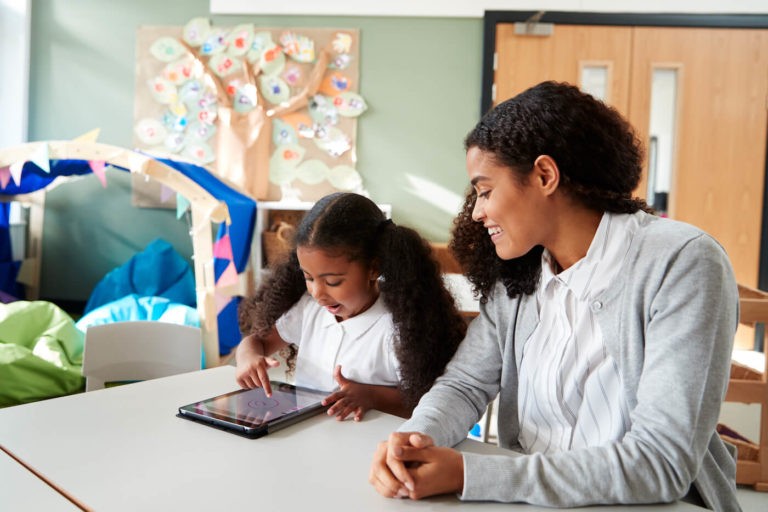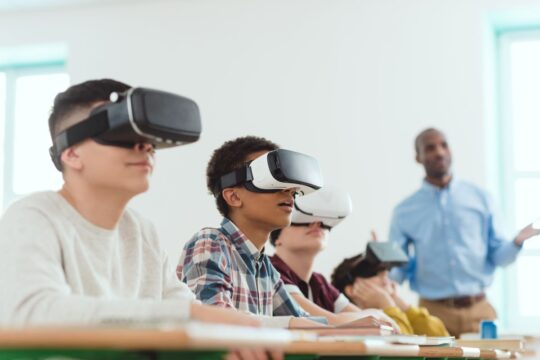In today’s rapidly evolving world, digital literacy has become an indispensable skill, deeply ingrained in our personal, professional, and social lives. For educators, possessing strong digital literacy skills is crucial to effectively prepare students to become productive and engaged citizens.
This comprehensive guide explores what digital literacy is, why it’s paramount, how to assess it, and strategies for promoting it through effective technology in the classroom and broader educational technology initiatives.
What is Digital Literacy? Understanding the Core Concept
Digital literacy refers to the knowledge and ability to effectively use a wide range of technology tools for various purposes (Mantiri, Hibbert, & Jacobs, 2019). It extends beyond mere technical proficiency.
According to Widona (2020), “Digital literacy is the ability to use and create technology-based content, including finding and sharing information, answering questions, and interacting with others and computer programming” (p. 2).
As educators navigate a landscape increasingly shaped by social media and interactive applications, understanding how to effectively integrate educational technology to engage students academically is paramount.
Eshet-Alkalai (2004) emphasizes that “Digital literacy involves more than the mere ability to use software or operate a digital device; it includes a large variety of complete cognitive, sociological, and emotional skills which users need in order to function effectively in digital environments” (p. 93).
Students must possess the competence to operate technology devices, software, and web programs to complete assignments and produce work that extends their learning.
They have access to a vast array of digital tools, including the internet and Web 2.0 technologies such as social media, email, web services, blogs, podcasts, messaging, and networking sites.
Crucially, students should also be able to leverage their digital literacy skills to create new knowledge and enhance their learning (Hague & Payton, 2011).
Why is Digital Literacy Important? The Imperative for 21st-Century Success
Understanding “why is digital literacy important” is fundamental for educators, students, and society at large. Educators bear a significant social and professional responsibility to be digitally literate themselves (Widana, 2020). The jobs of the 21st century are heavily reliant on technology in the classroom for production and information processing.
Therefore, educators must actively work to close the digital divide among various student subpopulations, ensuring equitable access and providing every student with the opportunity to compete on a global scale post-secondary education.
Students need to be well-versed in Web 2.0 tools and systems management databases to support companies and businesses within our society. Modern companies actively seek digitally literate employees to maximize production, innovate new products, and manage daily business operations.
Educators must master the integration of educational technology with pedagogy, not only to engage students but also to ensure they can effectively use digital tools to support the workplace and businesses for centuries to come.
Even entrepreneurs leverage digital literacy to promote and sustain their ventures. As Casey and Bruce (2011) note, “Teaching with digital technology prepares pupils for future participation in an evolving society where new media practices are deeply embedded in the associated structures and processes” (p. 77). This highlights the transformative power of digital literacy in shaping future readiness.
Digital Literacy Assessment: Measuring Competence and Growth
Digital literacy assessment is crucial for ensuring that we are adequately preparing students for life beyond the classroom. It’s important to recognize that young people’s confidence in using digital tools can sometimes be misleading, particularly when applying digital literacy skills to complex research tasks or project completion (Hague & Payton, 2011).
Educators cannot assume that youth are inherently proficient in digital literacy simply because they can navigate social media platforms or use software with minimal assistance.
Both educators and students require strong competency skills in digital literacy. The modern landscape has seen “Many established businesses have been uprooted and replaced by automation and digitization systems” (Widana, 2020, p. 1).
Teachers can utilize various tools, such as rubrics and checklists, to assess students’ digital competencies across all content areas. This involves analyzing student products and tasks in subjects like reading, math, science, social studies, and writing.
Effective digital literacy assessment should incorporate both competency components and socio-emotional descriptors to ensure students are well-rounded in their digital literacy skills.
Competency checklists might include, but are not limited to, using technology equipment accurately, navigating software programs proficiently, appropriately using Web 2.0 tools, and interacting respectfully and responsibly on digital platforms.
Promoting Digital Literacy in the Classroom: Strategies for Integration
Promoting digital literacy skills in the classroom requires a strategic approach. Hague & Payton (2011) define “Digital literacy as consisting of skills, knowledge and understanding that enable critical, creative, discerning and safe practices with digital technologies.”
To effectively foster these skills, educators must identify and overcome potential barriers that might hinder the effective utilization of technology in the classroom.
These barriers can include language differences, limited access to devices or internet, varying levels of student experience, school infrastructure limitations, and the rapid pace of technological change (Mantiri, Hibbert, & Jacobs, 2019).
To mitigate these, Hague & Payton (2011) suggest ensuring equipment is functional in advance, developing a plan for data management, knowing who to contact for technical assistance, reminding students of copyright laws when creating work, and being prepared to provide support to ensure high-quality student output.
Integrating educational technology in a pedagogically sound and engaging way can be challenging for teachers (Ryberg & Georgsen, 2010, p. 90).
Therefore, educators must be adaptable in their use of technology, maintain an open mind, be willing to learn from students, and stay abreast of technological advancements (Mantiri, Hibbert, & Jacobs, 2019).
School districts play a vital role by providing ongoing professional development to ensure that digital literacy remains a priority in every classroom nationwide.
Digital literacy practices should not be confined to designated computer class times. Teachers can integrate these practices across the curriculum to engage students at deeper levels in areas such as reading comprehension, science exploration, mathematical computations and processing, arts integration, and many other pedagogical skills.
Casey & Bruce (2011) highlight that “Digital literacy can sustain and enhance the inquiry learning cycles of asking questions, investigating phenomenon, creating new content, discussing findings, and reflecting on next steps” (p. 77 & 79).
When students are empowered to create new knowledge, they capitalize on learning experiences, which significantly supports their academic success and productivity in digital literacy.
Once students are expected to utilize digital literacy in the classroom, educators can celebrate their knowledge and successes. Encouraging students to work on projects that benefit the school community—such as creating flyers, managing general school data, developing PowerPoints for family nights, or producing digital media to promote school events—can be highly impactful.
The more we empower students to embrace digital literacy, the better prepared they will be to enter the workforce with a robust digital literacy background, enabling them to contribute meaningfully to the ever-changing world of educational technology and beyond.
Conclusion
As Hague & Payton (2011) articulate, “Teaching digital literacy is important not only in supporting students to become independent, critical learners but also in narrowing the gap between children’s lived experiences inside and outside of school.”
Educators must prioritize equity when supporting students with digital literacy. School districts have a responsibility to maintain and monitor the availability of internet services and adequate technology devices to ensure all students have the opportunity to use digital media beyond school hours.
Ultimately, digital literacy encompasses every component of our students’ lives, both within the classroom and far beyond.
You’ve got important career goals — we have the graduate program to get you there. Check out our available graduate degree programs to advance your career today!




